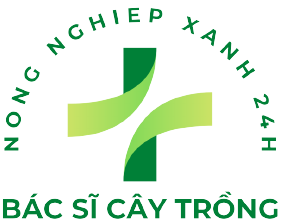These techniques made computation simpler as a outcome of collaboration of techniques employing shared resources. With the arrival of container-based utility deployment, this concept gained greater traction and underwent significant enchancment. Without the expense of a separate operating what is distributed computing system, containers can perform similarly to digital machines. The two most generally used systems for setting up containers are Docker and Kubernetes. They enable communication between providers which are working in containers as well as the ability to run in large clusters.
Making Use Of Entry Control In Distributed Systems
Like most producer-consumer scenarios, the producer (business) produces gadgets to the frequent knowledge retailer, and the consumer (individual) can request information from it. Distributed computing is a system of software program elements unfold over totally different computer systems however running as a single entity. Big O notation is a mathematical notation that describes the performance or complexity of an algorithm. It offers an higher bound on the number of operations required for an algorithm to finish, as a function of its input size. This helps in understanding how an algorithm will behave because the enter size grows, and in evaluating the efficiency of various algorithms. The notation is broadly utilized in laptop science and software engineering, particularly within the analysis of sorting algorithms, looking out algorithms, and different widespread knowledge buildings.
How Does Distributed Computing Assist With Huge Information Processing?
This high availability makes distributed computing techniques extraordinarily resilient and dependable. The 1970s noticed the invention of Ethernet and LAN (local area networks), which enabled computers to attach in the identical space. Peer-to-peer networks developed, and e-mail and the internet continue to be the most important examples of distributed techniques.
What Is The Future Of Distributed Computing?
Load balancing ensures that every node operates at optimal efficiency, contributing to the overall efficiency of the cloud system. In addition, redundancy is commonly built into these methods, that means that if one node fails, others can take over its duties, thereby maintaining the system’s reliability. Adding new nodes and locations makes it easier to regulate and scale efficiency. On the opposite hand, multiple data fashions and database management techniques are potential with heterogeneous distributed databases. Gateways are used to translate information across nodes and are usually created because of the merger of two or extra applications or methods.
Once completed, the server responds to the shopper with a message regarding the action taken. The objective of distributed computing systems is to make that distributed computing network—no matter how large and regardless of where its parts may be located—function as if it have been a single laptop. This coordination is completed by way of an elaborate system of message-passing between the assorted elements. Grid computing is highly scaled distributed computing that emphasizes efficiency and coordination between a number of networks. Each grid community performs individual capabilities and communicates the outcomes to other grids.
Each layer is dedicated to a selected function, such as user interface, enterprise logic, knowledge processing, data storage, and so on. This division of labor allows for larger modularity, making the system more scalable and easier to manage. Moreover, in plenty of distributed computing systems, redundancy is constructed into the architecture. This means that if one node fails, its duties can be reassigned to a different node, ensuring that there isn’t a loss of service.
Parallel processing is a way to speed up the processing of a task by splitting it into smaller tasks and finishing them concurrently. It may be done on a single laptop or multiple computers, depending on what you are trying to realize along with your parallel computing system. One of crucial features of distributed computing is that it allows knowledge to spread over multiple machines.
Additionally, distributing the data across multiple nodes reduces community congestion and knowledge switch prices whereas enabling local processing and caching, bettering efficiency and effectivity. Furthermore, distributed computing offers fault tolerance and redundancy to guarantee that the system can recuperate from failures and errors while maintaining information integrity and availability. Big information processing and storage are important tasks for data warehousing, but they’ll also pose important challenges when it comes to scalability, performance, and cost. Distributed computing is a solution that leverages a quantity of machines or nodes to work collectively on a common problem, corresponding to analyzing, remodeling, or loading large volumes of knowledge. In this article, you’ll find out about the benefits of distributed computing for big data processing and storage, and how it might help you obtain quicker, more efficient, and extra reliable information warehousing. There was once a distinction between parallel computing and distributed techniques.
Distributed computing is a software system with several components that perform cogently to create the advantages of a unified system. Although the person items are unfold across completely different areas, their collective is useful and productive. In impact, it’s a single software system that works amongst several distributed computers. With all these advantages mixed, you’ll have the ability to see why distributed computing systems have gotten increasingly in style amongst modern-day tech companies. Cloud computing is cheaper than setting up your servers because it reduces the need for on-site hardware or software maintenance. It’s additionally more flexible as a result of you do not have to worry about where your pc is bodily located, so lengthy as it has web entry.
Grid computing can be outlined as just one kind of distributed computing. In addition, while grid computing usually has well-defined architectural components, distributed computing can have varied architectures, similar to grid, cluster and cloud computing. Distributed computing networks may be related as local networks or via a wide space community if the machines are in numerous geographic areas. Overall, it’s sufficient to say that distributed systems are extremely efficient as they involve multiple computers that save time for customers. Also, they can provide larger efficiency as in comparison with centralized techniques.
The European Commission’s Digital Economy and Society Index (DESI) highlights a necessity for improved digital abilities in areas like blockchain to help the EU’s digital transformation objectives. A 2023 report by CasperLabs found that 90% of businesses within the US, UK, and China adopt blockchain, however data gaps and interoperability challenges persist. Reports from the World Economic Forum point out that 85 million jobs could also be displaced by a shift within the division of labor between people and machines by 2025. In a distributed computing system, nodes must rely on each other to finish the task at hand. In cloud computing, centralized data facilities store information that organizations can access on demand. The entire premise of distributed computing is breaking down one giant task into several smaller subtasks.
- Instead of leaving a strong laptop idle whereas a much less highly effective one struggles with a task, the system can distribute the workload in accordance with the capabilities of each node.
- Because VMs share resources, you can use a single machine that may successfully run a quantity of machines totally and nearly.
- Additionally, distributing the data across multiple nodes reduces network congestion and data transfer costs while enabling native processing and caching, improving performance and effectivity.
- They retailer knowledge throughout multiple nodes, ensuring excessive availability, efficiency, and scalability.
Over the final decade, this community has hit a unique capacity of 34,000 test agents. The MQL5 Cloud Computing community is easy-to-use with a myriad of opportunities, and with much less computing energy consumption. The price of utilizing the MQL5 Cloud Network could be calculated in advance with a particular formulation, as stated in the project FAQ. These days, with the assistance of this cloud community, human intervention is reducing, and this feature permits the conduction of multiple back-tests. For over 20 years, MetaQuotes has been profitable in growing an especially environment friendly and reliable buying and selling platform to achieve success within the financial market. Furthermore, investing in faculty development to ensure they possess up-to-date information and expertise is essential.
Unlike layered structure, object-based structure doesn’t have to observe any steps in a sequence. Each element is an object, and all of the objects can interact through an interface (or connector). Under object-based architecture, such interactions between components can happen by way of a direct method call. Distributed techniques encompass several components unfold throughout totally different computers but function as a single community.
These techniques can be utilized and seen all through the world within the airline, ride-sharing, logistics, financial buying and selling, massively multiplayer online games (MMOGs), and ecommerce industries. The focus in such methods is on the correspondence and processing of information with the need to convey data promptly to an enormous variety of users who’ve an expressed curiosity in such information. The consumer interface client is a further component within the system that gives customers with important system data. This isn’t a part of the clustered surroundings, and it doesn’t operate on the same machines because the controller.
Transform Your Business With AI Software Development Solutions https://www.globalcloudteam.com/ — be successful, be the first!






